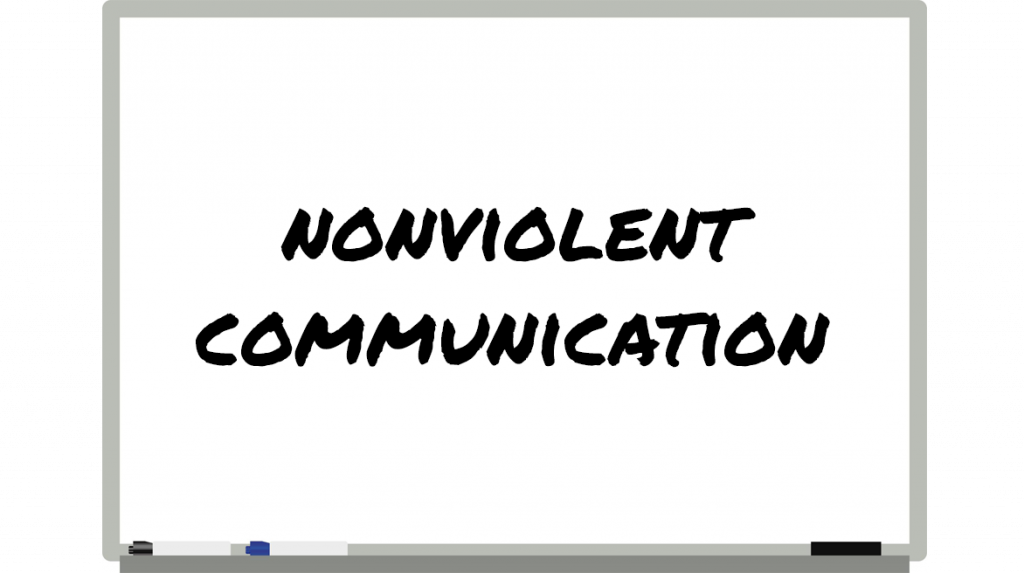Effective communication is essential in every area of life ― it increases understanding, leads to solutions and ultimately strengthens relationships. One of the simplest and most powerful techniques for creating breakthrough conversations is known as Nonviolent Communication.
What Is Nonviolent Communication?
Developed by American psychologist Marshall Rosenberg, Nonviolent Communication (NVC) is a systematic and scientifically-proven method for having breakthrough conversation that can be applied in both personal and professional relationships.
Nonviolent Communication is not about changing or manipulating other people. It is about sharing what is true for us and discovering what is true for others. The intention of NVC is to ultimately arrive at strategies and solutions that work for everyone.
A Step-By-Step Guide To Nonviolent Communication
Nonviolent Communication involves four components: Observations, Feelings, Needs and Requests.
By identifying what is triggering you, by identifying your feelings connected to the trigger, by identifying your needs connected to your feelings and by identifying a strategy to satisfy your needs, you can communicate in a way that results in solutions that enrich your life and enhance your relationships.
A basic framework for Nonviolent Communication is: “When I see/hear that [insert observation] I feel [insert feeling] because my need for [insert need] is not being met. In future, are you willing to [insert request]?” Expressing our observations builds connection, expressing our feelings indicates our intention, expressing our needs gives us freedom and expressing our request gives us choice.

For example: “When I see you looking at your phone when we are speaking (observation) I feel irritated (feelings) because I need connection (needs). In future, are you willing to give me your full attention? (request).”
Below we’ll unpack each component of NVC in more detail.
1) Observations
The first step to NVC is to communicate our observations of the behaviours that trigger us.
It is important to present our observations as specific objective facts rather than subjective opinions that contain judgement, blame or criticism. Separating our subjective opinions from the objective facts prevents the trigger of defences, opening up the possibility for an exchange that creates understanding.
For example, instead of saying “You don’t listen when I’m speaking” you would say “When we were speaking yesterday, I noticed that you were on your phone.”
2) Feelings
The second step to NVC is to communicate our feelings in relation to what we have observed.
It is important to take responsibility for our own experiences (“I feel”) instead of blaming others (“You make me feel”). The behaviour of others is considered the stimulus but never the real cause of our feelings. How we choose to respond to these stimuli is the real cause of our feelings.
For example, instead of saying “You make me angry when you don’t listen when I’m speaking” you would say “I feel angry when I am speaking and don’t have your full attention.”
3) Needs
The third step to NVC is to communicate our unmet needs in relation to what we are feeling.
Every human being shares six universal and fundamental needs which are a necessary requirement for happiness, contentment and fulfilment. All of the emotions that we associate with pain are connected to unmet needs and every behaviour is an attempt to fulfil these needs.
For example, “I want to spend more time with you” would imply the need for love and connection.
4) Requests
The fourth and final step of NVC is to communicate specific requests for actions that satisfy our unmet needs.
Requests are most affective when they are specific, affirmative and actionable. For the request to really be a request ― and not a demand ― you must allow the other person to say no or propose an alternative. Ultimately, both parties must take responsibility for getting their own needs met.
For example, instead of saying “I don’t want you to spend so much time at work” you would say “Would you be willing to spend more time with me at home?”
It Takes Two
Since NVC is a reciprocal exchange, it can be broken down into two parts:
- Speaker: Expressing honestly through the four components without making judgements, criticism, blame or demands.
- Listener: Receiving empathically through the four components without hearing judgements, criticism, blame or demands.
Below is a summary of NVC for the speaker:
- Observations: What I observe in relation to what triggers me.
- Feelings: What I feel in relation to what I observe.
- Needs: What I need in relation to what I feel.
- Requests: What actions I would like taken in relation to what I need.
Below is a summary of NVC for the listener:
- Observations: What you observe in relation to what triggers you.
- Feelings: What you feel in relation to what you observe.
- Needs: What you need in relation to what you feel.
- Requests: What actions you would like taken in relation to what you need.
Summary
Nonviolent Communication is a strategy for both speaking and listening so that we can connect and communicate what is important to us more affectively. There are four components to NVC which are Observations, Feelings, Needs and Requests.
When we express our observations, when we express our feelings caused by our observations, when we express our unmet needs caused by our feelings and when we make specific requests that fulfil our needs, we lay the foundation for affective and compassionate communication that leads to understanding, solutions and ultimately stronger relationships.







